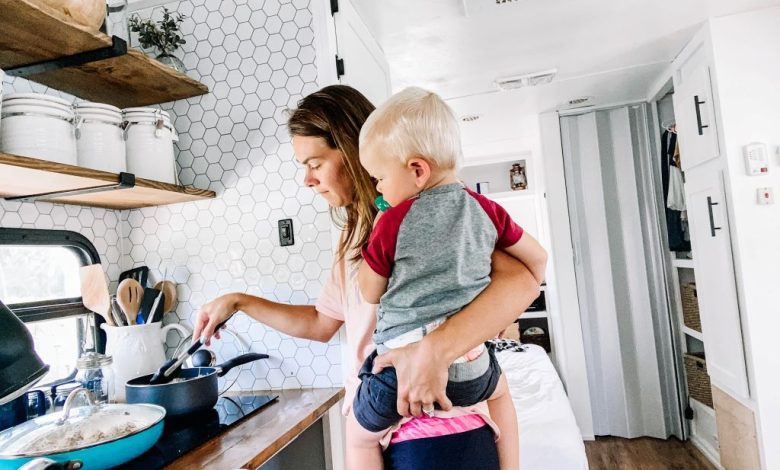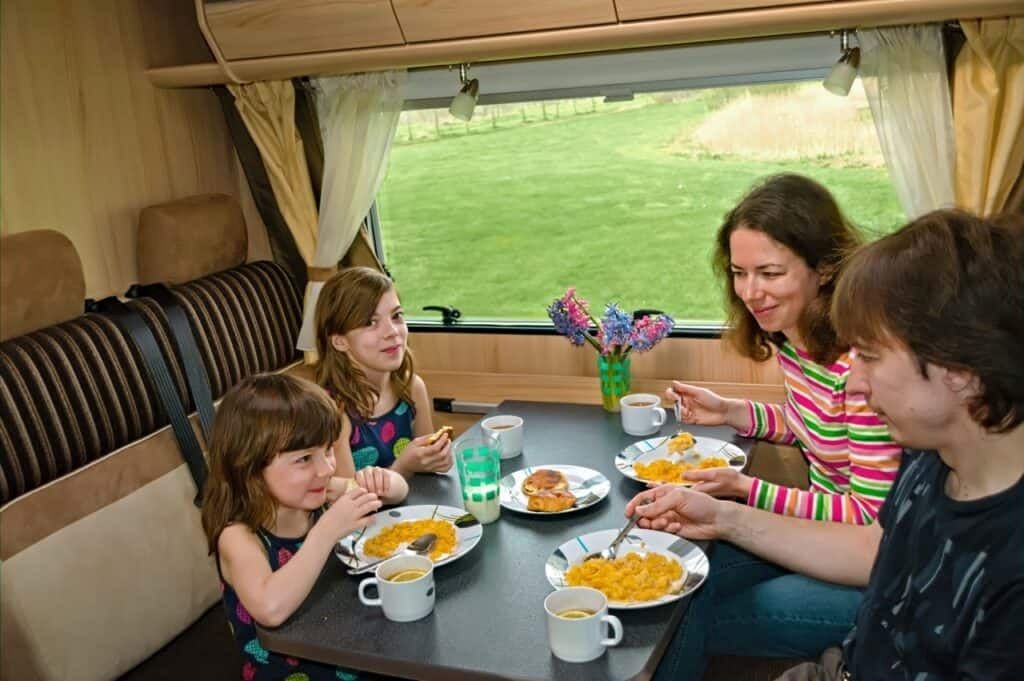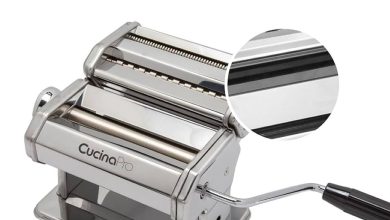RV Meal Planning for Limited Pantry Space

Living the RV lifestyle brings incredible freedom and adventure, but it also presents unique challenges when it comes to meal preparation and food storage. Unlike traditional homes with spacious kitchens and walk-in pantries, RVs require strategic thinking and creative solutions to make the most of every square inch. Whether you’re a weekend warrior or a full-time nomad exploring destinations through resources like Jamesons Journey, mastering the art of meal planning with limited pantry space is essential for a successful and enjoyable journey on the road.
The compact nature of RV living means that every item in your pantry must earn its place through versatility, nutritional value, and storage efficiency. Successfully managing meals in this environment requires a shift in mindset from abundance to intentionality. This approach not only helps you maintain a well-stocked kitchen but also reduces food waste, saves money, and ensures you always have delicious meals ready to prepare, whether you’re parked at a scenic campground or enjoying big sur rv camping on the beach with stunning coastal views.
Furthermore, effective meal planning becomes even more critical when you’re traveling to remote locations where grocery stores may be scarce or expensive. The key lies in understanding your space limitations, choosing ingredients wisely, and developing systems that work seamlessly within your mobile home environment.
Understanding Your RV Pantry Space
Before diving into meal planning strategies, it’s crucial to thoroughly assess and understand your available storage areas. Most RVs feature a combination of overhead cabinets, under-counter storage, and sometimes a dedicated pantry closet. However, these spaces often come with unique challenges such as irregular shapes, limited height clearance, and accessibility issues when items are stored too high or too deep.
Start by taking inventory of all your storage areas, measuring their dimensions, and noting any structural limitations like slanted walls or protruding fixtures. This assessment will help you determine the maximum size containers you can accommodate and identify which areas are best suited for different types of food items. Additionally, consider the weight distribution of stored items, as overloading upper cabinets can affect your RV’s balance and handling on the road.
Temperature and humidity variations also play a significant role in pantry organization. Areas near the engine or heating systems may experience higher temperatures, making them unsuitable for certain foods, while spaces closer to exterior walls might be subject to temperature fluctuations that could affect food quality and shelf life.
Essential Pantry Staples for RV Living
Building a foundation of versatile pantry staples is the cornerstone of successful RV meal planning. These ingredients should be shelf-stable, space-efficient, and capable of being transformed into multiple different meals. Rice, quinoa, and pasta serve as excellent base ingredients that store compactly and can be prepared in countless ways.
Canned proteins such as chicken, tuna, salmon, and beans provide essential nutrients while maintaining long shelf lives without refrigeration. These items can form the protein component of numerous dishes and require minimal additional ingredients to create satisfying meals. Similarly, canned tomatoes, coconut milk, and broth serve as flavor bases for soups, stews, curries, and sauces.
Dried herbs, spices, and seasoning blends are invaluable for adding variety and excitement to meals without taking up significant storage space. A well-curated spice collection can transform simple ingredients into cuisine from around the world, preventing meal fatigue during extended trips. Consider investing in a compact spice organization system that keeps seasonings easily accessible and properly sealed.
Nuts, seeds, and dried fruits provide healthy snacking options and can be incorporated into both sweet and savory dishes. These nutrient-dense foods offer sustained energy for outdoor activities and can serve as emergency food supplies when fresh options are unavailable.
Smart Storage Solutions and Organization
Maximizing your limited pantry space requires creative storage solutions and organizational systems that keep items accessible while preventing waste. Clear, stackable containers with airtight seals are invaluable for storing bulk items like grains, cereals, and snacks while protecting them from moisture and pests.
Utilize vertical space effectively by installing additional shelving or using stackable organizers that fit your cabinet dimensions. Door-mounted racks can hold spices, small jars, and frequently used items without taking up valuable shelf space. However, ensure that door-mounted storage doesn’t interfere with cabinet closing or create noise while driving.
Consider implementing a rotation system where newer items are stored behind older ones, ensuring that nothing expires before being used. Label containers with both contents and expiration dates to maintain freshness and prevent food waste. This system becomes particularly important when dealing with bulk purchases or when storing similar-looking items.
Magnetic strips and hooks can be attached to the inside of cabinet doors or metal surfaces to hold knives, measuring spoons, and small tools, freeing up drawer space for other essentials. These solutions keep items secure during travel while maintaining easy access during meal preparation.
Weekly Meal Planning Strategies
Effective weekly meal planning for RV living begins with understanding your travel itinerary, available cooking facilities, and storage limitations. Plan meals that use similar base ingredients in different combinations to minimize the variety of items you need to stock while maximizing meal diversity.
Create a master list of go-to recipes that require minimal ingredients and preparation time. These should include one-pot meals, sheet pan dinners, and slow cooker options that can simmer while you explore your destination. Additionally, plan for meals that can utilize leftovers creatively, such as turning roasted vegetables into frittatas or soup ingredients.
Consider the cooking methods available in your RV when planning meals. If you primarily rely on stovetop cooking, focus on skillet meals, pasta dishes, and steamed preparations. Those with ovens can incorporate baking and roasting into their meal plans, while outdoor grilling enthusiasts should plan for campfire-friendly options.
Weather conditions and campground amenities should also influence your meal planning decisions. Hot weather might call for no-cook meals or minimal cooking to avoid heating up your RV interior, while cold conditions might inspire hearty stews and warming comfort foods.

Shopping and Resupply Strategies
Successful RV meal planning extends beyond the confines of your mobile home to encompass strategic shopping and resupply practices. Research your route ahead of time to identify grocery stores, farmers markets, and specialty food shops along the way. This advance planning prevents last-minute panic shopping and allows you to take advantage of regional specialties and seasonal produce.
Develop relationships with local suppliers when possible, as they often provide insights into the best seasonal ingredients and may offer bulk purchasing options that benefit your budget. However, be mindful of storage limitations and only purchase quantities you can realistically use before spoilage occurs.
Consider joining wholesale clubs if your travel patterns frequently take you past their locations. The savings on bulk purchases can be significant, but ensure you have adequate storage space and consumption plans for larger quantities. Some items, like toilet paper and non-perishable goods, justify bulk purchases even in limited spaces due to their universal necessity and long shelf life.
Timing your shopping trips strategically can also yield benefits. Early morning or late evening shopping often provides access to marked-down items near their sell-by dates, which can be perfect for immediate use or short-term meal planning.
Cooking Techniques for Small Spaces
Mastering efficient cooking techniques becomes essential when working within the confines of an RV kitchen. One-pot and sheet pan meals minimize cleanup while maximizing flavor development. These cooking methods also reduce the number of dishes and utensils needed, which is particularly beneficial when dealing with limited storage and washing facilities.
Batch cooking allows you to prepare large quantities of base ingredients that can be transformed into multiple meals throughout the week. Cook a large pot of grains, roast a variety of vegetables, or prepare proteins that can be easily reheated and combined in different ways. This approach saves time, fuel, and cleanup while ensuring you always have meal components ready.
Invest in multi-functional cooking tools that serve multiple purposes without taking up excessive storage space. A good quality skillet that can go from stovetop to oven expands your cooking options, while a pressure cooker can significantly reduce cooking times and fuel consumption for dishes that typically require long simmering periods.
Meal prep techniques adapted for RV living focus on partially preparing ingredients rather than complete meals, which may not store well in limited refrigerator space. Pre-chopping vegetables, marinating proteins, and preparing spice blends ahead of time can streamline daily cooking while maintaining freshness and flavor.
Budget-Friendly Approaches
RV meal planning on a budget requires careful balance between cost savings and space efficiency. Buying ingredients that serve multiple purposes helps stretch both your dollars and your storage space. For example, coconut milk can be used in curries, smoothies, soups, and desserts, making it a worthwhile investment despite its higher individual cost.
Seasonal shopping takes advantage of natural price fluctuations while introducing variety into your meal planning. Research what produce is in season at your destinations and plan meals around these ingredients. Local farmers markets often offer competitive prices for seasonal items while providing opportunities to discover regional specialties.
Consider the true cost of convenience foods versus preparing items from scratch. While pre-packaged meals save time and space, they often come at a premium price and may contain more sodium and preservatives than homemade alternatives. Finding the right balance depends on your priorities, skills, and available time.
Generic and store brands often provide significant savings without compromising quality, particularly for basic pantry staples like grains, canned goods, and spices. However, don’t automatically assume generic is better; compare unit prices and consider the storage implications of different package sizes.
Dealing with Fresh Produce
Managing fresh produce in an RV requires strategic selection, proper storage, and creative menu planning to minimize waste while maintaining nutritional variety. Choose produce based on its storage requirements and expected shelf life, prioritizing items that can survive without refrigeration or that ripen gradually over your consumption timeline.
Root vegetables, onions, and garlic store well in cool, dark spaces and form the foundation of countless meals. Apples, oranges, and other hardy fruits provide essential vitamins while maintaining freshness for extended periods. However, more delicate items like berries and leafy greens require immediate consumption planning or specific storage techniques to prevent rapid deterioration.
Consider purchasing produce at different stages of ripeness to extend your fresh food supply over several days or weeks. Buy some items ready to eat immediately while selecting others that will ripen during your journey. This approach requires careful monitoring and menu flexibility but can significantly extend your access to fresh ingredients.
Preservation techniques such as quick pickling, dehydrating, or freezing small portions can help extend the life of fresh produce when you have excess quantities or when preparing to leave civilization for extended periods. These methods require minimal equipment and can transform perishable items into shelf-stable ingredients.
Conclusion
Mastering RV meal planning for limited pantry space is both an art and a science that improves with experience and experimentation. The key lies in understanding your space constraints, choosing versatile ingredients, and developing systems that work within your specific RV setup and travel style. By focusing on multi-purpose ingredients, efficient storage solutions, and flexible meal planning strategies, you can enjoy delicious, nutritious meals regardless of your location or pantry size.
Success in RV meal planning requires patience, creativity, and willingness to adapt your approach based on experience and changing circumstances. Start with simple strategies and gradually develop more sophisticated systems as you become comfortable with your space and cooking capabilities. Remember that the goal is not perfection but rather finding sustainable approaches that enhance your RV lifestyle while keeping you well-fed and satisfied on your adventures.
The investment in planning and organization pays dividends in reduced stress, improved nutrition, and enhanced enjoyment of your RV experiences. Whether you’re embarking on weekend getaways or full-time nomadic living, effective meal planning transforms your mobile kitchen from a limitation into a source of creativity and satisfaction that supports your adventurous lifestyle.
Frequently Asked Questions
-
How do I prevent food from going bad quickly in my RV pantry?
Proper storage is essential for extending food life in RV pantries. Use airtight containers to protect items from humidity and temperature fluctuations, store items in the coolest available areas, and implement a first-in-first-out rotation system. Additionally, avoid storing pantry items near heat sources like water heaters or in areas that receive direct sunlight through windows.
-
What are the most space-efficient protein sources for RV camping?
Canned proteins like chicken, tuna, salmon, and various beans offer excellent space efficiency and long shelf life. Dried legumes, nuts, and seeds provide plant-based protein options that store compactly. For fresh options, eggs store well and are incredibly versatile, while harder cheeses last longer than soft varieties without refrigeration.
-
How can I meal plan when I don’t know what cooking facilities will be available?
Focus on meals that can be prepared using multiple cooking methods. For example, plan dishes that work equally well on a camp stove, grill, or campfire. Keep backup no-cook meal options available, such as sandwiches, salads, and cold pasta dishes. Additionally, research campground amenities ahead of time when possible.
-
What’s the best way to organize spices and seasonings in a small RV kitchen?
Magnetic spice containers that attach to metal surfaces, compact spice racks that fit inside cabinets, and small drawer organizers work well for RV spice storage. Label everything clearly and consider consolidating similar spices into custom blends to reduce the total number of containers needed.
-
How do I handle meal planning for special dietary requirements in an RV?
Special dietary needs require extra planning but are definitely manageable in RV settings. Research specialty stores along your route, consider having items shipped to pickup locations, and focus on naturally compliant whole foods rather than processed alternatives. Build a collection of go-to recipes that meet your dietary requirements using shelf-stable ingredients.
Read More:
Planning a Birthday Party for an Active and Adventurous Child


